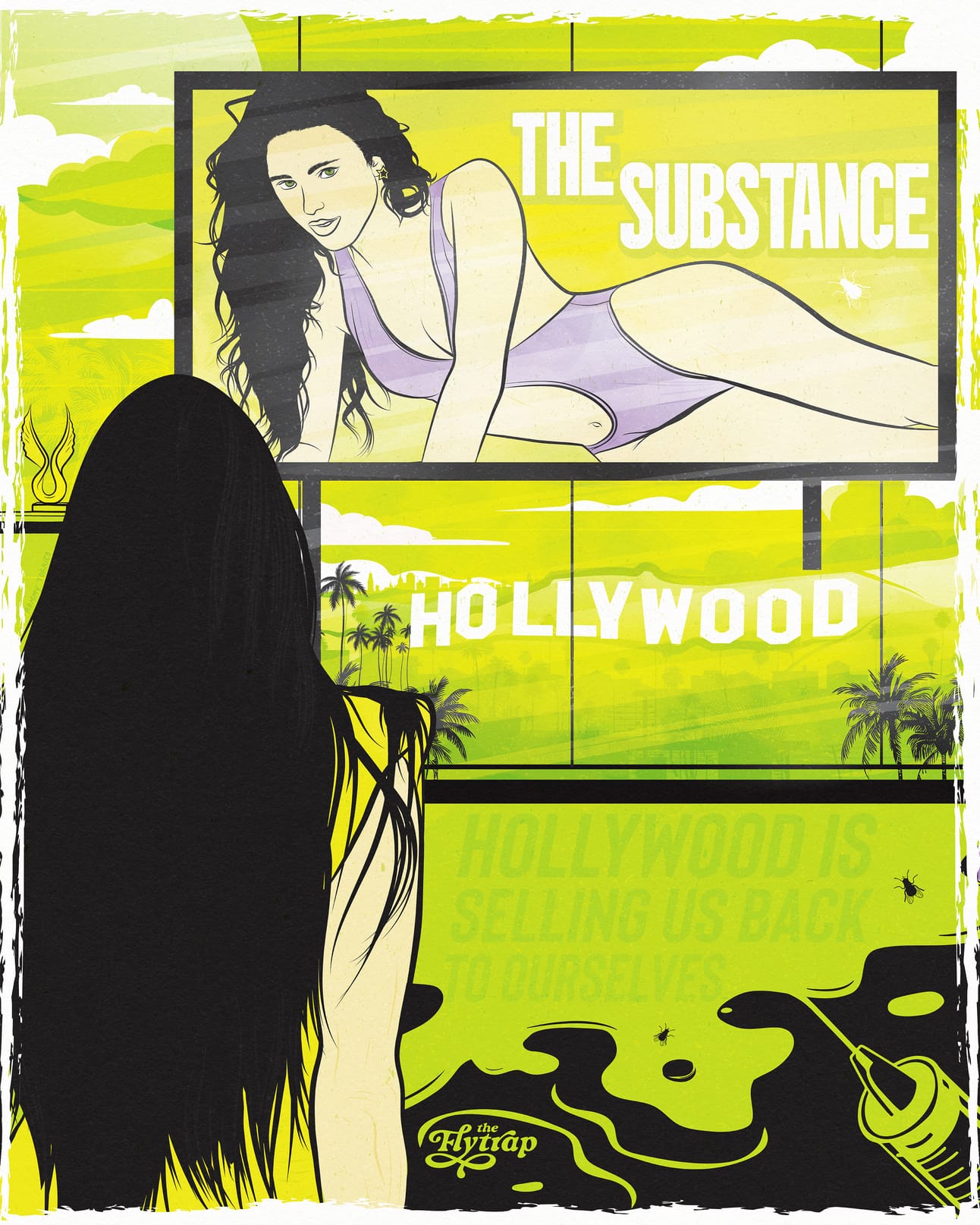The Substance Asks the Question: Can Hollywood Escape Its Own Beauty Standards?
The latest feminist film about society’s obsession with youth never answers its own question.

Editors’ note: Spoilers for the film The Substance ahead!
In The Substance, Elisabeth Sparkle is like most women who work in Hollywood: she built a career on looking good. Men want to be with her, and women want to be her, which Elisabeth obliges with a workout TV show reminiscent of Jane Fonda’s New Workout, which airs on a nondescript cable channel that seems to exist only to profit off Elisabeth’s fuckability. Also like most women who work in Hollywood, Elisabeth starts losing clout in the industry because – like all human women – she is aging, and her body isn’t as aspirational as it once was. When the grotesquely misogynistic producer of her show, Harvey (not sure if this is a Weinstein reference, it’s never made explicit, but my brain went there), decides she’s too old to be on TV and dismisses her unceremoniously, Elisabeth’s world crumbles.
Elisabeth is embodied onscreen by Demi Moore, an actress who has – much like Elisabeth – grown older in the public eye. Moore rose to fame in the early 1990s, starting her career as a model and breaking through as a movie star with her memorable (and sexy) role in the classic film Ghost (1990). Back in the day, Moore was one of the most desirable actresses of her generation, as well as the highest paid actress in the world. For her role in Striptease (1996), Moore was paid $12.5 million, an amount that was unprecedented at the time for a single performance. Casting Moore as Elisabeth was a stroke of genius – her striking looks and signature long, dark hair evoke Moore’s own Hollywood past as an intensely desirable woman.

